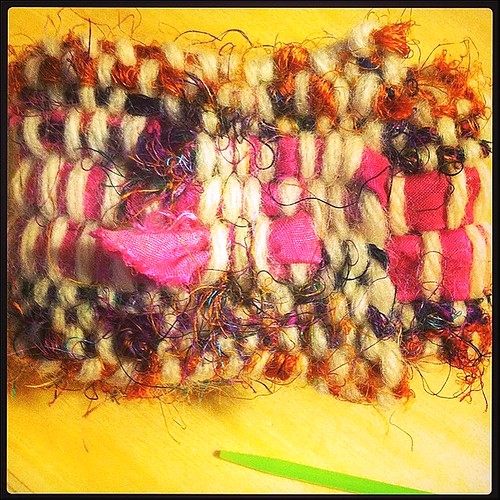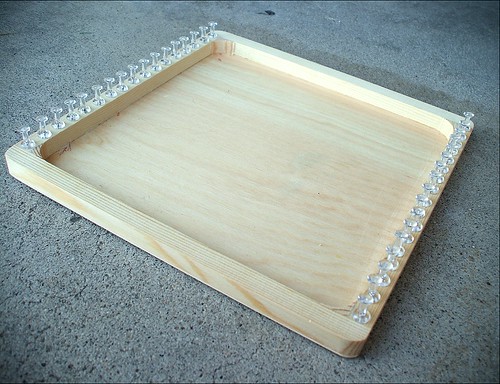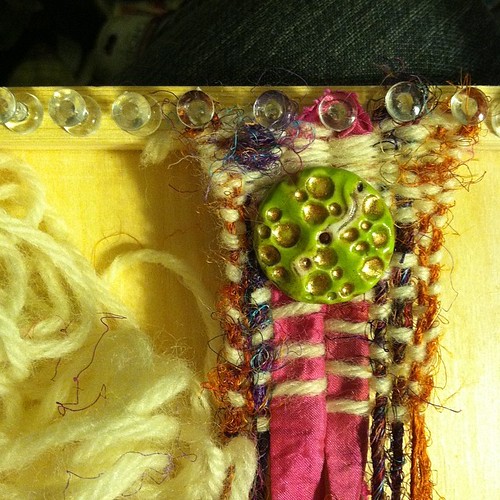Torture creates exemplars--for the purpose of quietly extorting obedience from the collegial cohort, and power--and silence--from officials. It is never for info-gathering.
Torture is never about gathering information; it is about controlling a large system, a large group of people, by beating a few, with impunity. It is profoundly about controlling your own audience and keeping them in line.
It is about covert power.
In such a system, a confession is *not* about cleansing
and renewal; it is about conserving covert power from exposure and
destruction.
Confession occurs at the time the system is about to rupture, at the time it is threatened either internally or externally with rebellion, exposure and housecleaning.
The confession elicits empathy, averts further inspection and creates delay -- delay during which the system can regroup, consolidate...and avoid additional losses.
The CIA never wants to see another housecleaning like that imposed upon it by Ford, in 1974, after Watergate.
With the Torture Report, they have accomplished that goal.
Pragmatically, no matter the rhetoric, the reality is that the Torture Report confesses nothing. It didn't tell us anything we didn't already know. We knew waterboarding was torture. We knew justice had been subverted at the very top to make way for it. What the Torture Report doesn't tell us is how the CIA subverted the judiciary in order to make it legal and how it kept the President, and others, from challenging the miscarriage? Why did so many people capitulate? Why was everyone frozen?
See the opening sentences, above, and then read the article below.
"Vote all you want. The secret government won’t change."
http://www.bostonglobe.com/ideas/2014/10/18/vote-all-you-want-the-secret-government-won-change/jVSkXrENQlu8vNcBfMn9sL/story.html …
Wednesday, December 10, 2014
Saturday, November 22, 2014
Better to Militarize, Than Ask Permission
The history of North Ireland, Ulsterization, would suggest that the goal
of providing military grade weaponry and training to local police
forces is to obscure and decentralize a federal policy which, if carried
out from the center, would incite widespread public backlash.
By allowing municipalities to choose to opt in (albeit using a time delimited offer of funding--a classic sales pressure tactic), the militarization of local US police forces maintains a parochial appearance. As a result, opposition occurs primarily at the local level--any potential national protest has been effectively atomized. Conversely, while acceptance occurs in multiple locations, the offer continues to come from only one place, with a consistency and persistence that suggests that the militarization of local police is, in fact, a centrally generated agenda with the force of policy.
In its current expressions, this didn't go through Congress. If it continues, it will be de facto domestic policy. As an "un-policy," its managers are not subject to conventional federal oversight (note the military and surveillance equipment given to the police department of Oakland, California, within the same time frame that it has also been subject to a federal monitor, assigned following repeated gross misconduct by the department). Furthermore, direct lines of communication--and relationships of benefactor to beneficiary--have been created with municipalities around the nation, creating a direct federal relationship independent of federal and state government.
If we were to observe this development in another country, we would be asking about the potential for a future military coup, understanding surveillance and the loss of privacy as two of its primary antecedent features.
In contrast, here at home, in a narcissification of news and information, we persist in our delusions of exceptionalism and worry that someone read our emails.
By allowing municipalities to choose to opt in (albeit using a time delimited offer of funding--a classic sales pressure tactic), the militarization of local US police forces maintains a parochial appearance. As a result, opposition occurs primarily at the local level--any potential national protest has been effectively atomized. Conversely, while acceptance occurs in multiple locations, the offer continues to come from only one place, with a consistency and persistence that suggests that the militarization of local police is, in fact, a centrally generated agenda with the force of policy.
In its current expressions, this didn't go through Congress. If it continues, it will be de facto domestic policy. As an "un-policy," its managers are not subject to conventional federal oversight (note the military and surveillance equipment given to the police department of Oakland, California, within the same time frame that it has also been subject to a federal monitor, assigned following repeated gross misconduct by the department). Furthermore, direct lines of communication--and relationships of benefactor to beneficiary--have been created with municipalities around the nation, creating a direct federal relationship independent of federal and state government.
If we were to observe this development in another country, we would be asking about the potential for a future military coup, understanding surveillance and the loss of privacy as two of its primary antecedent features.
In contrast, here at home, in a narcissification of news and information, we persist in our delusions of exceptionalism and worry that someone read our emails.
Thursday, September 4, 2014
Terror Groups and Crime? Or, The Border Patrol and Crime?
Developing nations are ripe for transnational crime?
What about the convergence of TOC (Transnational Organized Crime, not Table of Contents) with US finance, corporations, oil, and state security departments?
The US Border Patrol is part of US Homeland Security. The Border Patrol's infiltration is already documented. There are multiple documented instances of US finance being infiltrated. If finance is infiltrated, corporate infiltration must be assumed. This allows crime dollars to flow straight into American politics and elections. Who's buying our elections? Can we begin to seriously worry about a judiciary that favors corporations and those promoting opaque campaign monies? Can we count inexplicable judicial and executive decisions as early red flags of criminal infiltration, and extortion?
The threats that comprise extortion need not be explicit, or even conscious, among those familiar with the cost.
How are we talking about developing nations, when our own financial institutions and state security organizations have already closed deals?
A Look at Why Organized Crime and Terror Groups are Converging
See the rest of my reading list, here:
A Cartel Reader for Democracies
What about the convergence of TOC (Transnational Organized Crime, not Table of Contents) with US finance, corporations, oil, and state security departments?
The US Border Patrol is part of US Homeland Security. The Border Patrol's infiltration is already documented. There are multiple documented instances of US finance being infiltrated. If finance is infiltrated, corporate infiltration must be assumed. This allows crime dollars to flow straight into American politics and elections. Who's buying our elections? Can we begin to seriously worry about a judiciary that favors corporations and those promoting opaque campaign monies? Can we count inexplicable judicial and executive decisions as early red flags of criminal infiltration, and extortion?
The threats that comprise extortion need not be explicit, or even conscious, among those familiar with the cost.
How are we talking about developing nations, when our own financial institutions and state security organizations have already closed deals?
A Look at Why Organized Crime and Terror Groups are Converging
See the rest of my reading list, here:
A Cartel Reader for Democracies
Wednesday, July 16, 2014
The Smoke Makes Aliyah
Smoke makes aliya
these days
The heart descends
Innocents sprinkled on a beach
scribing impunity in blood
and broken bones
On balconies
the congregants are stunned
As the smoke goes up
they rend our screens
in mourning
___________________________________________
"It's a shame they didn't identify them as kids with all
of the advanced technology they claim they're using."
http://www.theguardian.com/world/2014/jul/16/witness-gaza-shelling-first-hand-account
Monday, May 26, 2014
Low Sugar Strawberry Jam
 I learned how to make jam in my late teens, from a woman whose mother and father were Polish immigrants. The tedious job of processing the fruit --washing, removing pits, slicing, mashing--fell to me.
I learned how to make jam in my late teens, from a woman whose mother and father were Polish immigrants. The tedious job of processing the fruit --washing, removing pits, slicing, mashing--fell to me.I also poured the paraffin she used in addition to bands and seals. Since, I've learned how to process the jam, just as safely, without the wax.
I love the taste of fruit in midwinter that canning affords, but I've always disliked the amount of sugar necessary to set the pectin.
Too sweet!
However, tons of sugar isn't necessary with the new pectins. Both instant pectin and low-sugar pectin make an excellent, tasty product. At least one company also offers a "scalable" pectin. You measure the right amount of pectin for the job: you can use a smaller amount of fruit and an every-day pot, instead of being chained to making a big batch in a stock pot or dutch oven. And, it's quick.
I usually make some variety of apricot jam, however, this year a gift changed things. A family at the local farmers' market produces ripe juicy strawberries you can smell from half a block away. I always buy from them, for the last several years, however, at the first market, they had sold out by the time I got there! All that was left was a basket of culls...which they offered me, for free, saying it would make delicious jam. It did. This week, I went back for 9 baskets and tried low-sugar jam, hot water bath processed.
 |
| 6 Cups Mashed Strawberries 4 Cups Sugar Pectin |
It started to set, right away-- no strawberry syrup, here.
Only four cups of sugar, compared to the usual 6-8...and the fruit flavor is just amazing. It tastes fresh. This is the jam you want to use for cakes and fancy sandwich cookies.
Monday, May 19, 2014
Handmade Peg Loom and Woven Cuff
Spotted this lovely lightweight wood frame at the craft store. The depth suggested it might make a very nice base for a loom. I stopped by another shop and picked up plastic thumbtacks. The rest is history.
I left some room between the pins: I knew I wanted to do some warp experiments that included thicker material. (For a denser weave, not only could the thumbtacks be closer together, but it looks very possible to add another row of tacks--or map pins--on the outside edge, between those on top.)
For this quick cuff, I used two lengths of golden yellow and purple, on each side. I wanted a tighter weave there and I wanted the design's edge to be defined. The center two lengths are coarse ribbon, without finished edges. They folded as I worked...I rolled with it.
The differing yarns are joined using a knitter's "secret knot." The weft is natural wool. All of the warp is silk. I have plans for a larger scarf and I wanted to test the weight and drape of this combination. I was really pleased with the result.
I left some room between the pins: I knew I wanted to do some warp experiments that included thicker material. (For a denser weave, not only could the thumbtacks be closer together, but it looks very possible to add another row of tacks--or map pins--on the outside edge, between those on top.)
For this quick cuff, I used two lengths of golden yellow and purple, on each side. I wanted a tighter weave there and I wanted the design's edge to be defined. The center two lengths are coarse ribbon, without finished edges. They folded as I worked...I rolled with it.
The differing yarns are joined using a knitter's "secret knot." The weft is natural wool. All of the warp is silk. I have plans for a larger scarf and I wanted to test the weight and drape of this combination. I was really pleased with the result.
 | |
| I really enjoy adding the color and texture in the warp, and using a plain weft. I think it will look especially nice in a narrow/long scarf. |
Labels:
"fiber arts",
"sari silk",
DIY,
handmade,
loom,
silk,
weaving,
wool
Sunday, April 20, 2014
Wool Soap Sock
Large oblong bars of soap are my nemesis. They won't stay put in the shower. They pop out of my grasp and go flying. The deeper dish that finally captures them also turns them to mush, as they sit in the puddle, at the bottom. I like the felted soaps, but what I really wanted was an updated version of my loofa.
What if...
I bought this little pocket loom, on a whim, a couple of months ago. It looked handy and easy to pack along. I also have some pure wool yarn I've been eager to play with. Well, actually, I had already played with it and created a mini-monstrosity that needed to be ripped out. Sometimes, stuff doesn't work.
So I ripped it out and doubled the yarn. By doubling the yarn and not using all of the pegs on the loom, I hoped to created a very tight tube for my soap. Why so tight and doubled? I hope that as the soap shrinks with use, there will be enough tension and enough fiber to allow the tube to remain fitted, and not sag around the soap.
So far, so good. It's snug, it felts with use, I can hang it up so it dries out thoroughly, and it's just the right amount of rough. We'll see if my "shrink-to-fit" plan works out...
What if...
 |
| I've left two pegs out of the job. |
So I ripped it out and doubled the yarn. By doubling the yarn and not using all of the pegs on the loom, I hoped to created a very tight tube for my soap. Why so tight and doubled? I hope that as the soap shrinks with use, there will be enough tension and enough fiber to allow the tube to remain fitted, and not sag around the soap.
 |
| The full picture. |
 |
| I drawstring finished this end. |
 |
| Binding off. Waxy colored pencils don't leave any marks. |
 |
| This soap is bulky. After drawing it closed, I also added a finger- crocheted loop. |
 |
| My handspan (length) is about 7" |
So far, so good. It's snug, it felts with use, I can hang it up so it dries out thoroughly, and it's just the right amount of rough. We'll see if my "shrink-to-fit" plan works out...
Wednesday, April 16, 2014
From Nail Buffer to Sanding Tool
 Working in mixed media, I enjoy borrowing tools from other arts and trades, and using them in unconventional ways. Even more, I enjoy modifying and creating my own tools.
Working in mixed media, I enjoy borrowing tools from other arts and trades, and using them in unconventional ways. Even more, I enjoy modifying and creating my own tools.I was in a dollar store one day, when I realized a beautician's nail-buffing tools might also be excellent for finishing metals. They were! However, the sanding papers didn't hold up under water and the grits, intended for acrylic nails, were quickly depleted.
So, I combined the beauty shop and the auto shop to make a new tool.

Taking wet-dry sandpapers in very fine,1500, 600 and increasingly coarser fine grits, I cut strips of each in exactly the same size as those on my buffing bars.

Fine, wet-dry sanding papers can be found at OSH hardware stores, near the paint section. If you don't find them in your hardware store with the sandpapers, near the paint, or with wood finishing products, try an auto shop--they should be able to tell you where to acquire the product, locally.
.
 Carefully peeling off the old strips, I discovered there was still quite a bit of adhesive left; they were ready to go (a thin layer of E6000 glue would have been my go-to, had that not been the case).If you find the padding has degraded, try craft foam with the adhesive backing, as a substitute.
Carefully peeling off the old strips, I discovered there was still quite a bit of adhesive left; they were ready to go (a thin layer of E6000 glue would have been my go-to, had that not been the case).If you find the padding has degraded, try craft foam with the adhesive backing, as a substitute.I applied my wet-dry strips in order of fineness and now have an inexpensive, easily replenished sanding tool perfect for small work, that can be used with water--as a lubricant and to reduce fine dust.
As a bonus, I also discovered the end caps were removable and the interior is large enough to hold the fish-hook sharpener I use for making pins.
Subscribe to:
Comments (Atom)




